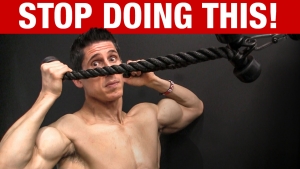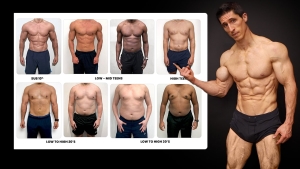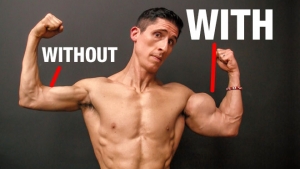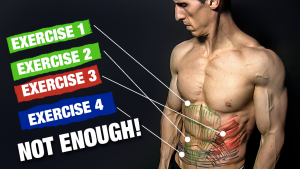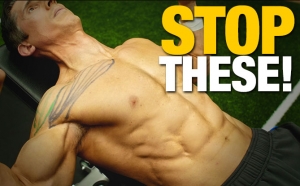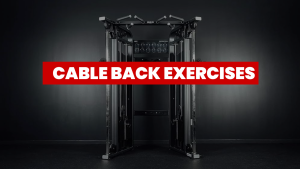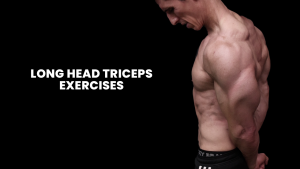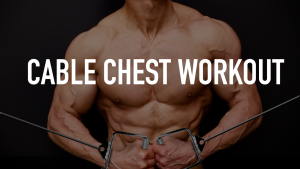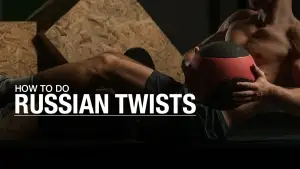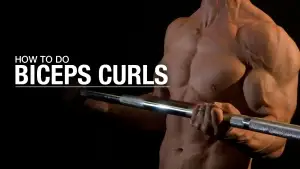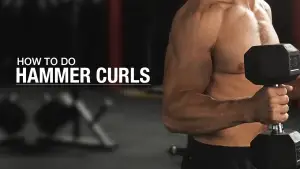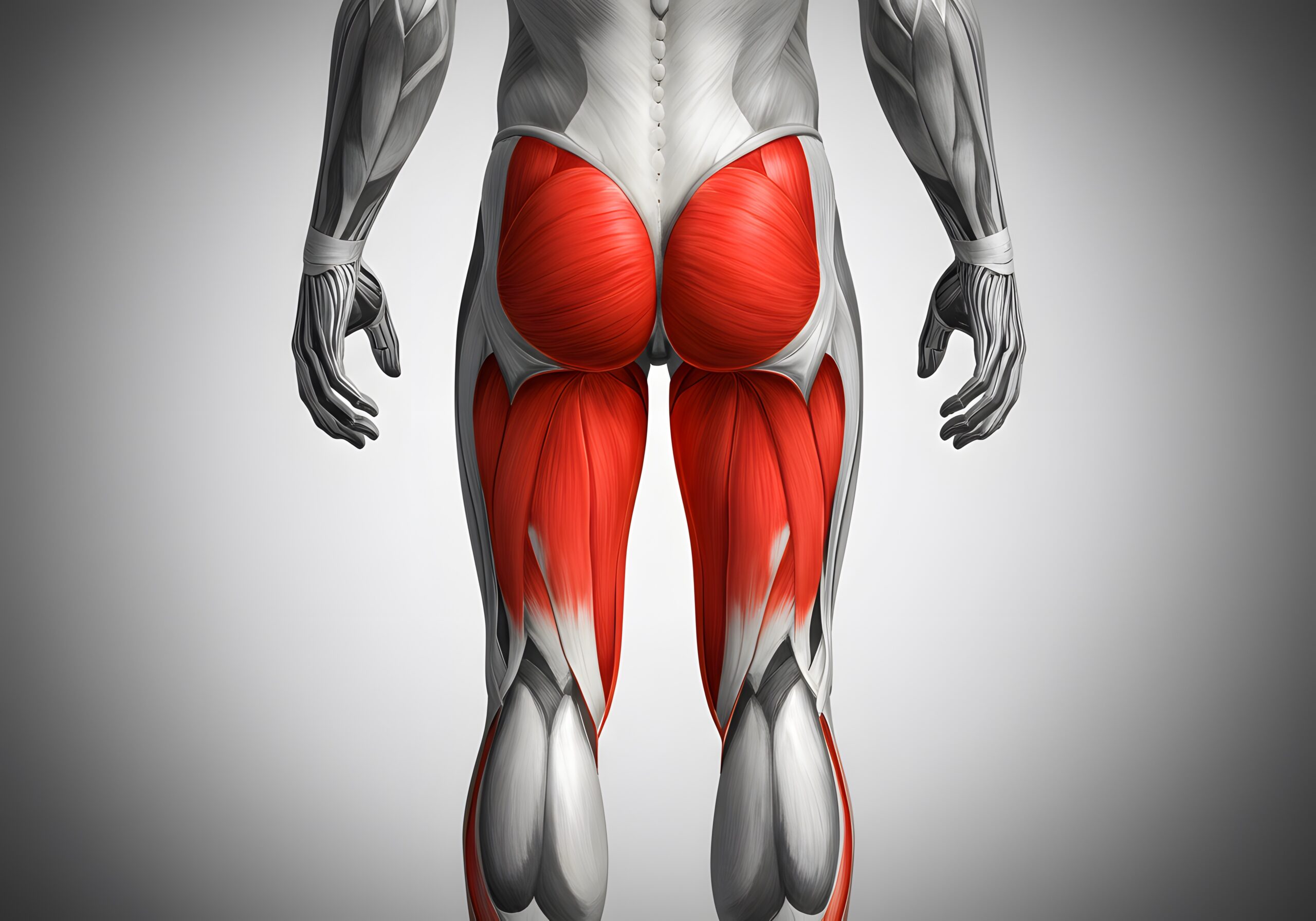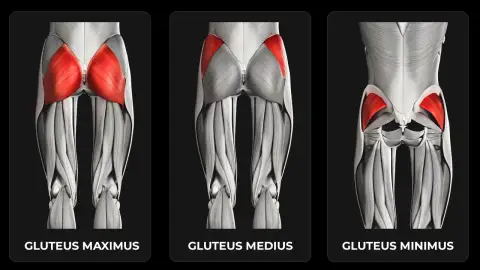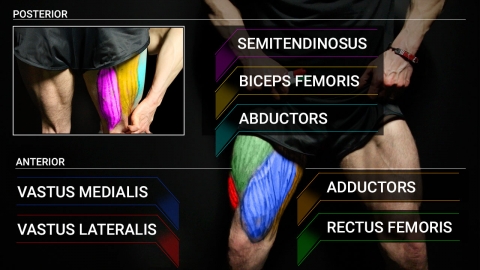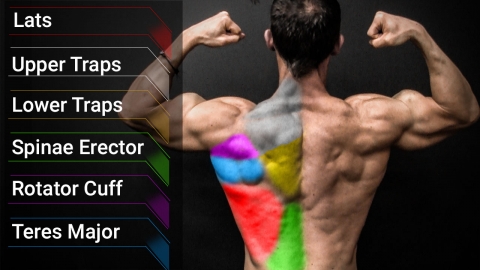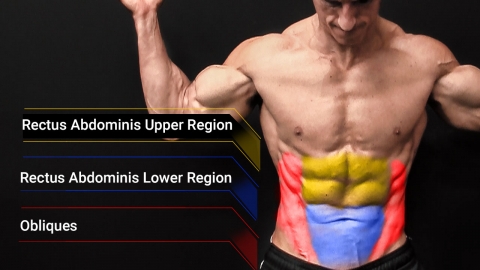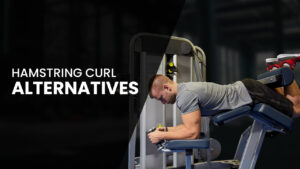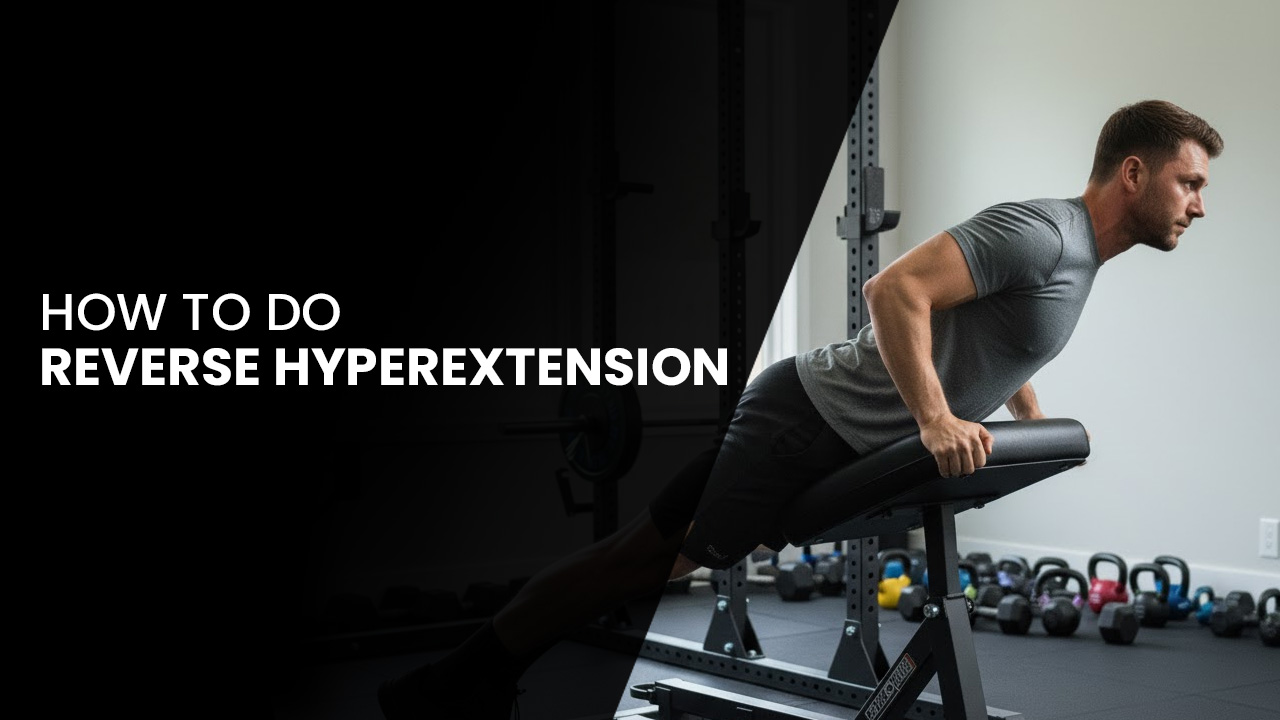
WHY do the reverse hyperextension?
And the few who do think they know? They usually end up doing it wrong.
They’ll swing their legs up as fast as they can, then wonder why they feel it in their lower back instead of their glutes.
That’s not training. That’s momentum. And momentum doesn’t build muscle, but it does build bad habits.
The Reverse Hyperextension is one of the most effective ways to strengthen the posterior chain while helping your lower back recover instead of wrecking it.
But only if you understand what’s really happening at the hips.
So, before you load it up or start swinging away, let’s break down how this thing works, why it’s different from a Traditional Back Extension, and how to finally do it the way it was meant to be done.
REVERSE HYPEREXTENSION: MUSCLES WORKED
The Reverse Hyperextension is one of those rare movements that teaches your body how to move correctly, not just how to move weight.
It targets nearly every muscle in your posterior chain, from the glutes down to the hamstrings and up through the spinal stabilizers.
Unlike traditional hyperextension exercises or even a Hip Thrust, the Reverse Hyperextension shifts the emphasis off the lower back and onto the hip muscles where the power should come from.
It’s one of the most efficient strengthening exercises for developing balanced force between the pelvis and trunk, improving hip control, and building real-world strength that carries over to exercises like the Barbell Back Squat, Clean and Jerk, and Kettlebell Swings.
Let’s break down what’s really happening under the hood and why this movement is such a biomechanical gem.
The gluteus maximus is the largest and most powerful muscle in the human body, sitting on the back of the hips and spanning from the posterior pelvis down to the upper femur.
Its main function is hip extension, driving the leg backward through a full hip ROM (range of motion).
During the lift phase of the Reverse Hyperextension machine, the glutes contract concentrically to raise the legs behind you, and then eccentrically control the descent to avoid momentum.
A controlled Glute Hyperextension activates the glute fibers through a deep stretch and full contraction, improving muscle recruitment, hypertrophy, and posterior pelvic tilt control.
While the gluteus maximus handles most of the heavy lifting, the gluteus medius and minimus provide lateral hip stability.
These smaller muscles keep the pelvis level and the legs aligned, especially in Reverse Hyperextension variations like single-leg or band-resisted versions.
They help correct imbalances that show up in movements like Hip Thrusts, Glute Bridges, and Leg Extensions, improving overall pelvic control, which translates directly to better mechanics in compound lifts and athletic movements.
Naturally, this is a go-to move for athletes, Olympic lifters, and anyone looking to rehabilitate lower back injuries without adding excessive spinal loading.
HAMSTRINGS
Right alongside the glutes, the hamstrings drive the back half of the movement.
This group includes the biceps femoris, semitendinosus, and semimembranosus and it runs from the sit bones of your pelvis to just below the knee on the back of your leg.
Their dual role is hip extension and knee flexion, but in the Reverse Hyperextension, the emphasis is on their hip-extending function.
The hamstrings assist the glutes by pulling the femur in line with the torso, helping generate force without spinal strain.
When compared to Good Mornings, Glute-Ham Raises, or a GHD machine variation, the Reverse Hyper engages the hamstrings through a longer range of motion with less axial load.
This makes it a safer alternative for recreationally active individuals or those in physical therapy aiming to strengthen without aggravating the lower back muscles.
ERECTOR SPINAE (SPINAL ERECTORS)
Deep along the spine sits the erector spinae, a group of lumbar back muscles responsible for maintaining a neutral back and controlling spinal posture.
In the Reverse Hyperextension, their job isn’t to move the spine but it’s to stabilize it.
As the legs lift, the erectors fire isometrically to resist unwanted spinal movement and maintain alignment between the pelvis and trunk.
This is key to preventing a lower back extension moment that could overload the lumbar vertebrae.
For anyone using the Reverse Hyperextension machine for back rehab exercises, that decompressive swing at the bottom of each rep gently tractions the spine, improving circulation and helping rehabilitate lower back injuries safely.
CORE
Your core is the anchor of the lift, connecting upper and lower body power.
The rectus abdominis, obliques, and deep stabilizers hold the spine in neutral alignment, preventing chest drop and keeping the bar path efficient.
During the box squat’s mid-rep pause, tension often fades, which is a common mistake that weakens the lift and increases injury risk.
Maintaining intra-abdominal pressure, as if bracing for impact, keeps the trunk rigid and your power output high.
Strong core engagement doesn’t just improve your box squat, but it actually fortifies every movement that depends on balance and stability.
ERECTOR SPINAE (LOWER BACK)
Your core, including the transverse abdominis, obliques, and multifidus, works behind the scenes to keep your pelvis steady and prevent unwanted rotation or anterior tilt.
Think of it as the foundation that lets your hips move freely while your spine stays locked in.
By maintaining intra-abdominal pressure and bracing through the midsection, these stabilizers allow for controlled muscle activation across the entire posterior chain muscles.
Whether you’re on a Reverse Hyperextension machine, stability ball, or doing a Bodyweight Reverse Hyperextension at home with resistance bands, the goal is the same: move from the hips, not the spine.
BENEFITS OF THE REVERSE HYPEREXTENSION
The Reverse Hyperextension does more than build strength. It fixes the way your body moves.
While most gym machines load the spine and compress your joints, the Reverse Hyperextension does the opposite. It strengthens the posterior chain while decompressing the spine.
It’s one of the rare training tools that builds muscle, restores function, and prevents injury all at once.
From the Glute-Ham Raise developer to the Barbell Back Squat, every big lift and athletic movement depends on what this exercise trains: powerful, controlled hip extension.
Let’s break down the five biggest reasons the Reverse Hyperextension deserves a permanent place in your training regimen.
GLUTE & HAMSTRING STRENGTH
The Reverse Hyperextension isolates the hip extensors like few other posterior chain training movements can.
Unlike the Glute-Ham raise or a heavy Hip Thrust, this exercise works the gluteus maximus and hamstrings through a longer, more natural range of motion with minimal spinal stress.
From a biomechanical comparison, the reverse hyper creates a smooth arc of force from the pelvis to trunk, encouraging full glute contraction at the top and controlled eccentric lowering for optimal muscle hypertrophy.
You’re not just lifting your legs. You’re building the power base that carries every major lift you do, from barbell back squats to clean and jerks.
Whether you’re using just body weight or adding load on a Reverse Hyperextension machine, the key is slow, deliberate control because real gains come from tension, not momentum.
SPINAL DECOMPRESSION
This is where the Reverse Hyperextension stands apart from nearly every other hyperextension exercise.
When Louie Simmons introduced it to the strength world, he wasn’t chasing more power. He was fixing his lower back.
The movement creates a gentle traction effect on the spine at the bottom of each rep, giving the lumbar back muscles a dynamic stretch while improving circulation and recovery.
Unlike the compressive loads you get on a super squat machine, Olympic smith machine, or power smith machine, the Reverse Hyper unloads the spine and reduces axial stress.
That decompression is a game changer for lifters who’ve beaten up their spinal erectors over years of heavy training.
POSTERIOR CHAIN BALANCE
Most athletes and gym-goers are front-loaded during their workouts. Too much leg extension, too much sitting, not enough posterior chain training.
The result is tight hip flexors, weak glutes, and an anterior pelvic tilt that wrecks posture and power output.
The Reverse Hyperextension fixes that imbalance.
By teaching your hips to move independently of your spine, it reinforces proper posterior pelvic tilt mechanics and re-educates the body to fire the glutes first, not the lower back.
When integrated into your training regimen, it complements other fitness products like the donkey calf, seated leg curling, and total core crunch machine, filling the missing gap most equipment leaves behind: full-range, hip-driven strength.
LOW-BACK REHAB & INJURY PREVENTION
For anyone struggling with lower back tightness or recurring tweaks, this is where the Reverse Hyperextension earns its reputation.
It strengthens the spinal erectors and erector spinae safely by allowing them to stabilize, not overextend.
Instead of forcing a loaded lower back extension moment like Traditional Back Extensions or Super Peck Back movements, the Reverse Hyper trains the muscles to brace while the hips move.
That distinction protects the spine while rebuilding its endurance and resilience, making it ideal for physical therapy, back rehab, or deload weeks.
Add this to your recovery days or after heavy compound lifts, and you’ll start bulletproofing your lower back instead of breaking it down.
ATHLETIC PERFORMANCE
The Reverse Hyperextension isn’t just for rehab. It’s a direct performance enhancer. Every explosive movement in sport depends on hip extension.
The stronger and faster you can extend the hip, the more force you can deliver.
The Reverse Hyperextension builds the same power chain without the high spinal loading. You can pair it with your main lifts on a super power squat rack or Olympic half rack.
You can also use it as a finisher to improve muscular endurance through controlled tempo work.
If you want more carryover to real-world strength and athletic performance, the Reverse Hyperextension deserves a permanent spot in your lineup.
HOW TO DO REVERSE HYPEREXTENSIONS
Some exercises are simple. You can watch them once or twice and you’ve basically got it.
Then there are others that look simple, but when you break down what’s really happening on a biomechanical level, you realize things might be a little more complicated than you initially thought.
The Reverse Hyperextension is one of those exercises. And that’s why I’m spending extra time breaking this one down.
It’s one of the best movements you can do for your posterior chain, but only if you perform it the right way.
Get it wrong, and you turn a spine-sparing hip movement into a lower-back stress test.
For this example, you’ll see that I’m performing the Reverse Hyper on a GHD machine, which works perfectly for most setups.
But you can also do it on a flat bench, a sturdy table, or if you have access to a Reverse Hyper machine.
The setup may change, but the technique never does.
BEFORE YOU START
Before you hit the Reverse Hyperextension, spend 5 to 10 minutes getting your hips, glutes, and hamstrings ready to move.
Cold muscles don’t contract efficiently and this exercise depends on precise hip control, not brute force.
Here’s a quick, no-nonsense warm-up sequence you can run through:
- Glute Bridges: 2 sets of 15 reps
- Dynamic Leg Swings: 10 reps per leg
- Bodyweight Good Mornings: 2 sets of 10 reps
- Bird Dogs: 2 sets of 10 alternating reps
These few minutes are the difference between just doing the movement and training it.
Warm up the right muscles, and your posterior chain will fire more efficiently, your lower back will stay protected, and every rep will feel stronger and more stable.
SET UP PROPERLY
Start by positioning yourself face-down with your hips just off the edge of the bench or GHD pad. Your upper body stays on the pad while your legs hang freely.
Now, grip the sides or handles firmly so your torso stays anchored.
Keep your spine neutral from head to tailbone. There shouldn’t be any arching or rounding.
Your upper body should act as an anchor point while your hips move freely through the lift. The movement happens at the hips, not the spine.
CONTROL THE MOVEMENT
Let your legs hang straight down under control. Brace your abs before each lift like you’re about to take a punch. That keeps your torso stable and prevents your lower back from arching as your legs rise.
From there, lift your legs by driving through your hips, not by kicking or jerking your back.
At the top, squeeze your glutes hard and pause for a split second before lowering slowly.
You don’t need to lift your legs higher than parallel to the floor; going past that only shifts the load to your lower back.
Lower under control until your legs are slightly below the pad. Think of lowering your legs through mud, which means they should be moving slow, deliberate, and under tension.
The key word here is control. The slower you go, the more your glutes and hamstrings have to work.
Avoid what I call hyper-swinging. This is when you throw your legs up using momentum. That turns a great strength exercise into a poor physics demonstration.
Remember that the goal isn’t to move weight, but it’s to make the muscle do the work.
FORM CHECKPOINTS
Use this quick checklist to make sure your form stays locked in:
- Neutral spine: No arching or rounding.
- Hips drive the motion: Not your lower back.
- Top squeeze: Full glute contraction.
- Controlled lowering: Don’t drop your legs.
Common errors include swinging the legs too high, bending the knees, or overextending the back.
If you feel more in your lumbar spine than your glutes, that’s your body telling you to slow down and fix your form.
And yes, that classic cue still works: imagine cracking a walnut between your cheeks at the top. It’s funny, but you’ll never forget it.
REVERSE HYPEREXTENSION


HOW TO DO THE REVERSE HYPEREXTENSION:
- Lie face-down on a GHD machine. You can also use a flat bench. The key is getting your hips just off the edge of the pad so your legs can move freely.
- Grip the handles or sides firmly. Your torso should stay completely still throughout the movement.
- Keep your spine neutral from head to tailbone. No arching, no rounding. Your upper body is the anchor, and your hips are the hinge.
- Start with your legs hanging straight down. Before you lift, brace your core like you’re about to take a punch.
- Now, drive your legs upward using your glutes and hamstrings. Don’t kick. Don’t throw. Just lift until your legs are in line with your torso.
- At the top, squeeze your glutes hard for a solid second. You should feel tension, not momentum.
- Instead of letting gravity take over, lower your legs slowly under control until they’re just below the pad. You should feel the glutes stretch, not your back extend.
WHAT MAKES IT EFFECTIVE: What makes the Reverse Hyperextension so effective is that it strengthens the hips and posterior chain without placing heavy compression on the spine. It trains the glutes and hamstrings through a full range of motion while the spine stays stable and even decompresses at the bottom of each rep. You’re building power where you want it (at the hips) while protecting your lower back.
REVERSE HYPEREXTENSION COMMON MISTAKES
People don’t get injured because the Reverse Hyperextension is dangerous. They get injured because they underestimate it.
It’s one of those movements that looks easy until you realize how much control it demands.
A slight change in angle, tempo, or tension can flip it from a powerful glute and hamstring exercise into a recipe for lower-back strain.
Before you load it up or start swinging away, let’s break down the most common form errors and how to keep this movement doing what it’s supposed to do.
SWINGING THE LEGS INSTEAD OF LIFTING WITH THE HIPS
The most common mistake you’ll see (and maybe even catch yourself doing) is swinging the legs up instead of lifting them under control.
The problem is momentum.
Once you start throwing your legs, the glutes and hamstrings stop doing the work, and your lower back starts absorbing all the stress.
The fix is simple, but it takes discipline.
Start each rep from a dead stop with your legs hanging straight down. Drive the movement from your hips, not your knees or your back.
You should feel your glutes contract first and your legs follow naturally. If you can’t pause at the top without losing balance, you’re moving too fast. Slow it down, take control, and make every inch count.
OVEREXTENDING THE LOWER BACK AT THE TOP
This one happens when people think higher equals better. It doesn’t. Once your legs pass the line of your torso, the tension leaves the glutes and goes straight into your lumbar spine.
You’ll know it’s happening if your lower back starts to arch and your hips tuck forward. That’s not strength. That’s spinal compression.
The correct range ends when your body forms a straight line from shoulders to heels. That’s full hip extension.
Beyond that, you’re no longer building muscle. You’re just bending bones. Keep your core tight, stop at parallel, and let the squeeze in your glutes tell you when you’re done.
LOSING CORE BRACE
A lot of people forget that the Reverse Hyperextension is a core-stabilized movement. The hips are meant to move, not the spine.
But if you let your abs relax, your pelvis starts tilting with every rep, and suddenly your lower back is doing all the lifting.
Before every rep, take a deep breath and brace your abs. That abdominal pressure locks your spine in place and gives your hips a stable base to move from.
If you feel your stomach sag or your ribs flare at the top, reset and brace again. You’ll immediately feel the difference of smoother motion, more control, and no strain on the back.
INCORRECT HIP POSITION ON THE PAD
Where your hips sit on the pad determines everything about how this exercise feels.
If you’re too far up, your legs can’t move freely. Too far off, and your lower back starts arching just to stay balanced.
Neither option helps you build stronger glutes.
Set yourself so that your hips are just off the edge of the bench or GHD pad, which is enough that your legs can hang freely without pulling your torso forward.
You should feel your upper thighs resting on the pad and your chest pressed firmly against it.
When you’re in the right spot, your hips can hinge naturally while your torso stays completely still. That’s the sweet spot.
RUSHING THE ECCENTRIC
The lowering phase is half the lift, but you’ll see lifters just drop their legs between reps like they’re swatting flies.
The problem with that is simple. There’s no control, no muscle tension, and no gains.
You should feel your glutes and hamstrings working just as hard on the way down as they do on the way up.
Take two or three seconds to lower your legs, keeping your spine neutral and your core braced the entire time.
FORGETTING TO BREATHE AND RESET
When fatigue sets in, the first thing to go is breathing. You hold your breath, rush the reps, and lose control of your brace and that’s when form breaks down.
Proper breathing keeps your core tight and your rhythm consistent.
Exhale at the top as you squeeze your glutes. Inhale slowly as you lower your legs, and re-brace before the next rep.
REVERSE HYPEREXTENSION VS. TRADITIONAL BACK EXTENSION
At first glance, the Reverse Hyperextension and Traditional Back Extension look like they train the same thing. After all, both hit the posterior chain and involve a hip hinge.
But the difference lies in where the movement starts, which muscles take the lead, and how your spine handles the load.
Let’s break down what really separates these two exercises.
WHERE THE POWER STARTS
The biggest difference comes from the direction of movement.
In the Reverse Hyperextension, your upper body stays fixed while your legs move freely behind you. The motion starts at the hips, not the spine.
This setup allows your glutes and hamstrings to drive the lift through controlled hip extension, while the lower back simply stabilizes.
In the Traditional Back Extension, the opposite happens. Your lower body is locked in place, and your torso moves through space.
That means the lift originates from the torso down, with the spine extending against gravity.
The result is more emphasis on the spinal erectors and lower back, and more compression through the lumbar spine.
PRIMARY MOVERS
In the Reverse Hyper, the glutes and hamstrings are the main engines. They work together to extend the hips while the lower back acts more as a stabilizer.
You’re training the muscles that generate power and they are the same ones that drive sprinting, jumping, and deadlifting but without overloading the spine.
On the flip side, the Traditional Back Extension shifts the spotlight to the erector spinae. These deep spinal muscles are responsible for extending and supporting the lower back.
While the glutes and hamstrings assist, the majority of the work is done by the lumbar extensors, making it a lower-back dominant exercise.
COMPRESSION VS. DECOMPRESSION
This is where the two movements couldn’t be more different.
The Reverse Hyperextension decompresses the spine during the swing phase. As the legs lower, the weight pulls gently downward, creating traction through the lumbar area. This is a unique feature that makes it as restorative as it is strengthening.
The Traditional Back Extension, on the other hand, is compressive. As you lift your torso against gravity, the spine experiences axial load. This isn’t necessarily bad but it’s definitely demanding.
It can build endurance and resilience in the spinal erectors when done correctly, but poor form can quickly turn it into a recipe for discomfort.
WHY YOU’D CHOOSE ONE OVER THE OTHER
The Reverse Hyper is designed to build hip strength while sparing the back.
It reinforces proper hip extension mechanics, improves posterior chain balance, and promotes recovery by enhancing circulation and decompression. That’s why it’s often used in both athletic training and rehab settings.
The Traditional Back Extension is built for lower-back strength and endurance.
It teaches your spinal erectors to resist flexion and maintain stability under load, which is important for Heavy Squats and Barbell Deadlifts.
The tradeoff is greater compressive stress, which means you have to respect your form and volume.
WHICH ONE’S RIGHT FOR YOU?
If your goal is athletic performance, glute development, or spinal health, the Reverse Hyperextension is your go-to. It builds power at the hips, protects the back, and complements big lifts without adding extra wear and tear.
The Traditional Back Extension is best when your goal is to build lower-back endurance or strengthen the spinal stabilizers for compound lifts. It’s a staple for lifters who need their erectors to hold strong under heavy load.
But here’s the thing, guys: Both belong in a well-rounded program. They just play different roles. Think of the Reverse Hyper as the builder and the Traditional Back Extension as the reinforcer.
Use the Reverse Hyper on recovery or accessory days to develop hip power and decompression and use the Back Extension on strength days to condition the spine for real-world load.
PROGRAMMING TIPS
You can’t just throw the Reverse Hyper anywhere in your workout and expect results. It’s not a “go heavy and grind” lift.
Treat it as the recovery and strength tool it was designed to be, and it’ll build your hips, protect your spine, and keep your performance improving week after week.
Here’s how to make it work for your goals:
STRENGTH
If your goal is pure strength or posterior-chain power, keep your reps low to moderate at around 3–4 sets of 8 to 10 reps.
Focus on controlled tempo, full hip extension, and an intentional squeeze at the top of each rep.
The best time to do these is after your heavy compound lifts like Squats or Deadlifts. Why?
Because those big lifts load the spine. The Reverse Hyper then strengthens the same muscles without adding more compression.
You’re still training hip extension, but now under safer conditions.
HYPERTROPHY (MUSCLE GROWTH)
To build size in the glutes and hamstrings, you need tension and time. Perform 3 to 5 sets of 12 to 15 reps, moving with a 2 to 3 second lowering phase and a full squeeze at the top.
The goal isn’t to chase fatigue. It’s to create as much controlled tension as possible throughout the range of motion.
Slot these in toward the end of your lower-body workouts, ideally after your main strength work and accessory lifts.
REHAB OR RECOVERY
If you’re coming off a lower-back issue or just want to keep your spine healthy, the Reverse Hyperextension is great as a recovery and prehab movement.
It’s one of the few movements that strengthens the lower back and hips while simultaneously helping the spine recover.
Keep it light and controlled. Think 2 to 3 sets of 15 to 20 reps, focusing on smooth motion and decompression at the bottom.
FREQUENCY & VOLUME GUIDELINES
For most people, twice a week is the sweet spot. Once as an accessory after your big lifts, and once on a recovery or posterior-chain day.
More isn’t necessarily better since quality of contraction always beats quantity of reps.
If you’re new to the movement, start light and prioritize form over load for the first few weeks.
When every rep looks smooth, strong, and controlled, that’s when you can start adding weight or resistance bands.
If you’re using it year-round, alternate between heavier strength-focused phases (3×3 at 80–85%) and lighter power phases (5×3 at 60–70%) to train both ends of the force-speed spectrum.
The Reverse Hyperextension isn’t flashy, but it’s one of the smartest moves you can add to your training.
It builds the kind of strength that doesn’t just show up in the mirror. It shows up when you lift, run, and move pain-free.
Make it a consistent part of your workouts and you’ll have a posterior chain that performs as good as it looks.
Check out our complete line of ATHLEAN-RX Supplements and find the best training program for you based on your fitness level and goals.

- The Reverse Hyperextension strengthens the glutes and hamstrings while simultaneously unloading the spine, something few exercises can do.
- It also trains hip extension under control, building power and stability without the wear and tear of heavy axial loading.
- You can perform this movement on a flat bench, sturdy table, or dedicated Reverse Hyper machine, if you have access to one. For this breakdown, we’ll be using a GHD machine.
- Here’s how to perform Reverse Hyperextensions:
- Start by lying face-down on the GHD with your hips just past the edge of the pad so your legs can move freely behind you.
- Grip the footplate or the sides of the machine to anchor your upper body, then brace your core and keep your spine neutral from head to tailbone.
- From here, drive your legs upward by squeezing your glutes and hamstrings, lifting until your body forms a straight line.
- Pause for a second at the top, then lower your legs slowly under control until you feel a light stretch at the bottom.
REVERSE HYPEREXTENSION FAQ
Reverse Hyperextensions are one of the few movements that build strength and recovery at the same time.
They target the glutes, hamstrings, and lower back without compressing the spine, which makes them a perfect complement to heavy compound lifts like Squats and Deadlifts.
Beyond strength, they also improve hip mobility and teach your body how to generate power from the right place: the hips, not the spine.
That makes them just as valuable for athletes who sprint and jump as they are for lifters who want to stay pain-free long term.
Yes, and more effectively than most people realize. The Reverse Hyper keeps the lower back out of the equation and puts the glutes in their ideal line of pull, driving the leg back against gravity while maintaining constant tension.
Because the movement hits both the concentric (lifting) and eccentric (lowering) phases under control, it stimulates muscle fibers that typical glute bridges and kickbacks often miss.
That consistent tension builds strength, shape, and density through the entire glute complex. The key is control. You can’t rush it and expect growth.
Most people go wrong before the first rep even starts.
They set up too high on the pad or let their hips roll forward, instantly shifting pressure into the lower back. Then they start swinging their legs like a pendulum, using momentum instead of muscle.
Others arch their spine at the top thinking it gives them more range, when it’s really just overextension that defeats the purpose of the exercise.
The fix is all about stability: brace your core, move through your hips, and control every inch of the lift. When the movement feels smooth and deliberate, you’re doing it right.
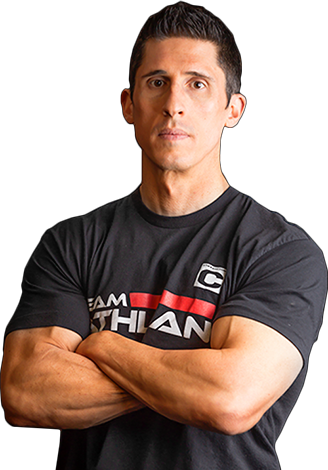
Jeff Cavaliere M.S.P.T, CSCS
Jeff Cavaliere is a Physical Therapist, Strength Coach and creator of the ATHLEAN-X Training Programs and ATHLEAN-Rx Supplements. He has a Masters in Physical Therapy (MSPT) and has worked as Head Physical Therapist for the New York Mets, as well as training many elite professional athletes in Major League Baseball, NFL, MMA and professional wrestling. His programs produce “next level” achievements in muscle size, strength and performance for professional athletes and anyone looking to build a muscular athletic physique.
